
Canada has some of the oldest geological structures in the world. A large part of its rock formations belong to the Precambrian Period (4.6 billion years to 543 million years ago), and the country is rich in fossil beds.
One of the dominion's most important fossil beds is the world-famous Burgess Shale Formation. The fossil bed in Burgess Shale is regarded as one of the most significant paleontological discoveries of our time. Research has shown that when the sediments from which fossils are obtained were being laid down, this region lay close to the equator. At that time, the Burgess Shale area lay on the lower edge of the North American continent.
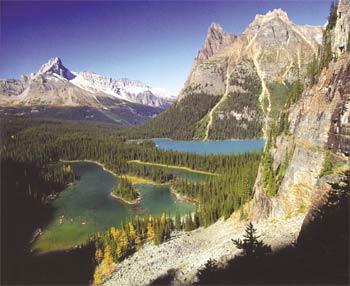
Burgess Shale
The first fossils discovered were a number of invertebrate specimens found by the paleontologist Charles Doolittle Walcott in the early 1900s. In fact, Burgess Shale is an area known for its invertebrate fossils. Thanks to these specimens more than 500 million years old, some 140 species that lived during the Cambrian Period have been identified. The characteristic of these fossils is that they belong to many different phyla and seem to have emerged suddenly, with no forebears in preceding strata. Evolutionist sources admit that accounting for these fossil discoveries is impossible in terms of the theory of evolution.
Another major fossil field in Canada lies in Miguasha Park. This area, rich in fossil specimens, lies on the Gaspé Peninsula. Fossils were first discovered in the region in the mid-1800s. The region's rock structure dates back some 375 to 350 million years. Research reveals that around 370 million years ago, the Gaspé Coast was a tropical gulf.
The fossils in Miguasha exhibit a wide variety, from micro-organisms to vertebrates and from invertebrates to plants. Some plant and fish fossils obtained from Miguasha are the earliest examples of their kind. For example, the plant known as Spermasposita is thought to be the oldest flowering plant on Earth. With their fully formed and flawless structures, these specimens show that living things were already complex at a time when evolutionists maintain that life was supposedly exceedingly primitive.
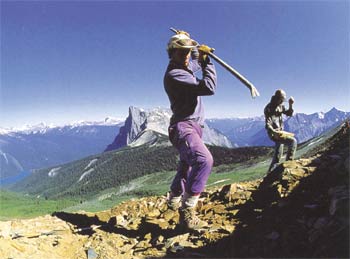 |  |
| Fossil researches in the Burgess Shale | Fossil researches in the Province of Alberta |
 |
Mooneye Fish Age: 50 million years old The mooneye fish is a medium-size North American fish that normally lives in large lakes and rivers. Like other living creatures, this species of fish has survived for millions of years without any change in its physical structure. The fact that a 50-million-year-old mooneye fish is identical to its living descendents cannot be explained by evolutionists. |
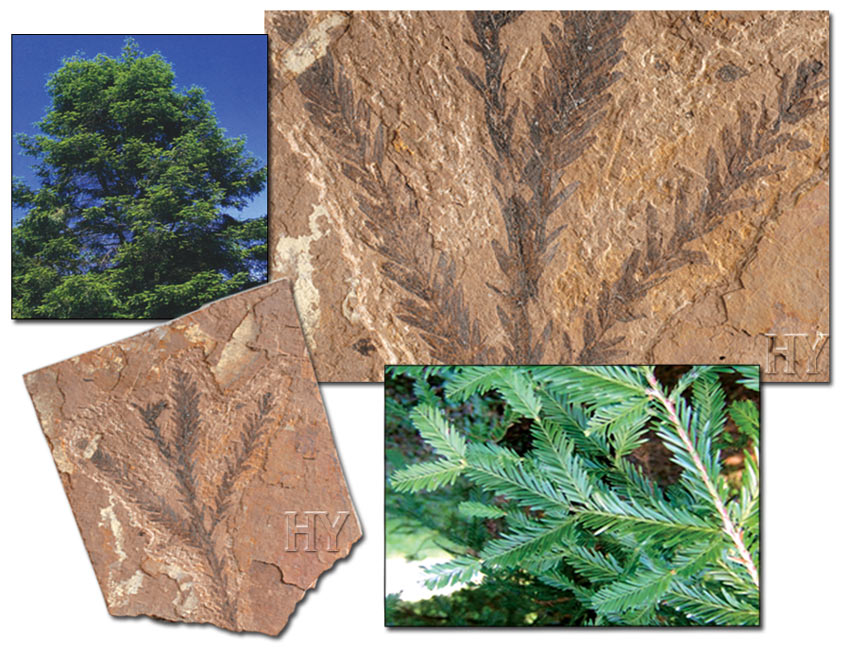 |
Sequoia Branch Age: 50 million years old Now known as the largest trees on Earth, sequoias live a very long time. Most of them grow in North America. Some are 1,000 years old and 150 meters (492 feet) high. Fossils show that sequoias have remained the same for millions of years; that is, they have not undergone a process of evolution. The fossil seen here of a 50-million-year-old sequoia branch is identical to that of trees living today. |
 |
Mooneye Fish Age: 50 million years old From Canada's fossil fields, numbers of fossil mooneye fish have been encountered. All these fossils show that mooneye fish have been the same for millions of years. This million year-old stability—no change in physical structure—is an important proof that evolution has never happened. |
 |
Sequoia Stem with March Fly Age: 50 million years old March flies belong to the Bibionidae family and feed mostly on plant pollen. The fossil record shows that all species of flies came into being at the same time and have lived on for millions of years without any change in their physical structures. This proves that flies, like all other living creatures, did not evolve. Evolutionists admit that the origin of flies cannot be explained in terms of the theory of evolution. |
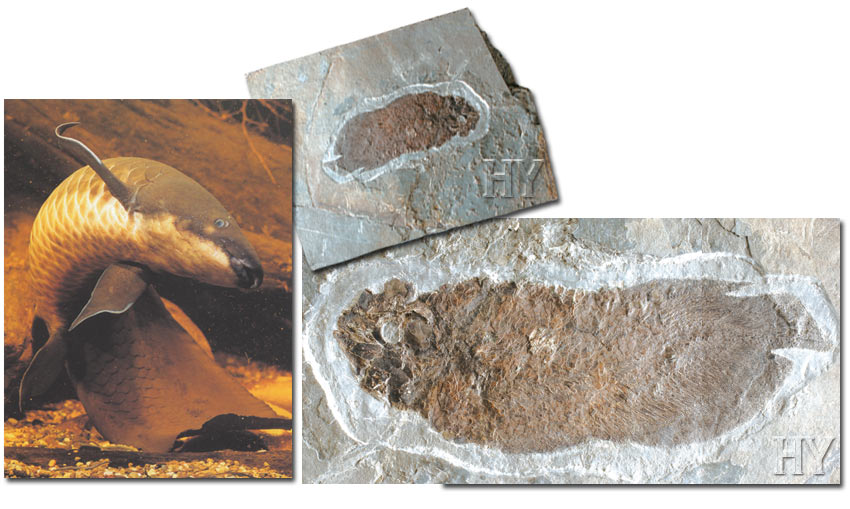 |
Lungfish Age: 350 million years old Today's lungfish live mostly in Africa and South America. When the water level falls and a river dries up, these fish survive by burying themselves in the mud. The oldest known fossil of a lungfish dates from the Devonian period (417 to 354 million years ago). The fossil pictured also dates back to this period. There is no difference between a lungfish of today and one that lived 350 million years ago. These fish have not changed in hundreds of millions of years and offer proof that living creatures did not evolve, they were created. |
 |
Sequoia Stem and Hornbeam Leaf Age: 54 to 37 million years old Plants have such highly complex structures that it is not possible that they appeared by chance and evolved from one another, as evolutionists claim. The fossil record shows that the various classifications of plants appeared all at once, and that there was no process of evolution connecting them. The fossils seen here of sequoia and hornbeam tree leaves dramatize that evolution is not a valid theory. And there is no difference between plants living today and these equivalents that lived between 54 and 37 million years ago. |
 |
Sequoia Stem with Seedpods on Branch Age: 54 to 37 million years old There is no difference between sequoia trees growing today and those that were growing millions of years ago. This proves that plants, like animals, did not undergo a process of evolution. |
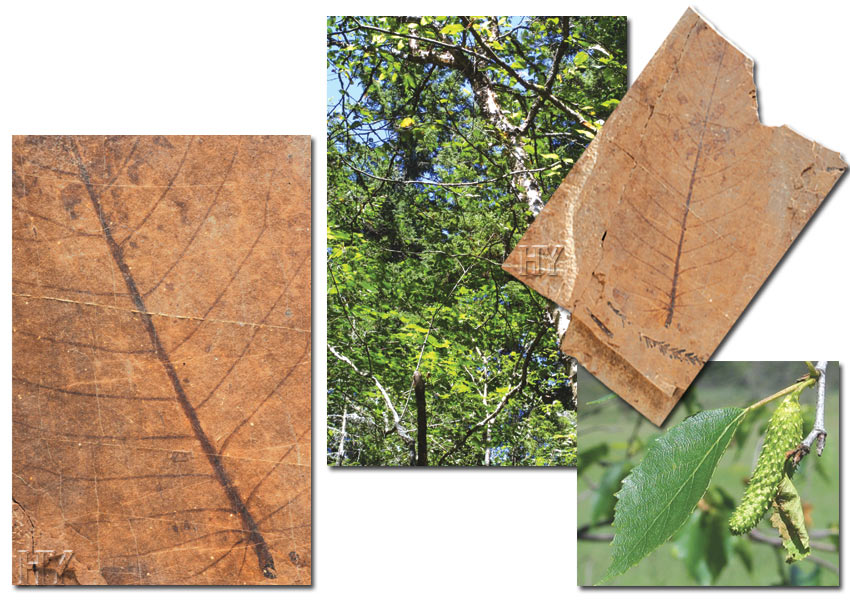 |
Birch Age: 54 to 37 million years old The birch tree belongs to the Betula genus and grows in northern climates. The fossil pictured is from a tree that lived between 54 and 37 million years ago. This leaf is identical to those on present day's trees. This proves that birch trees, like other living creatures, did not evolve. |
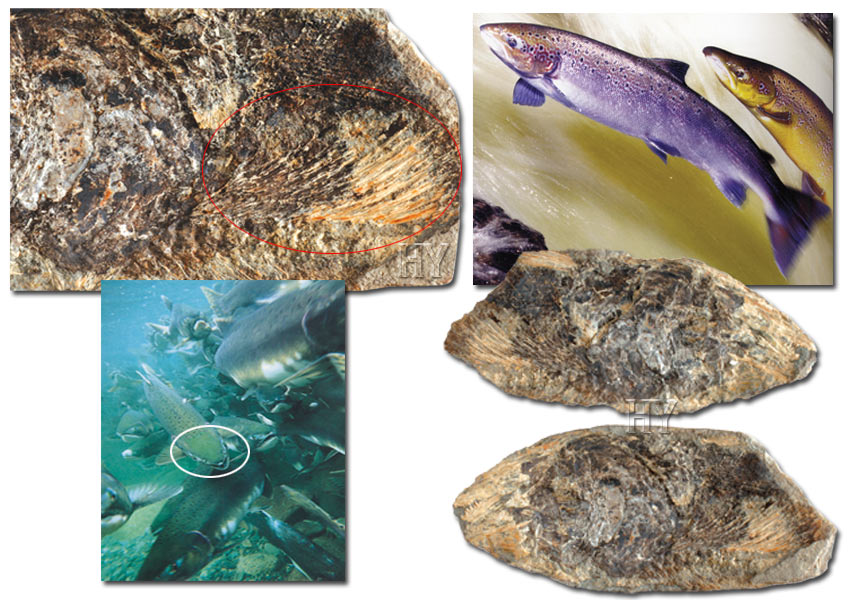 |
Salmon Head Age: 1.8 million to 11,000 years old Fossils of salmon have been found at many geological levels, and all are identical to salmon alive today. Every fossil that is discovered refutes Darwinists and proves that salmon, like other living species, have never changed. |
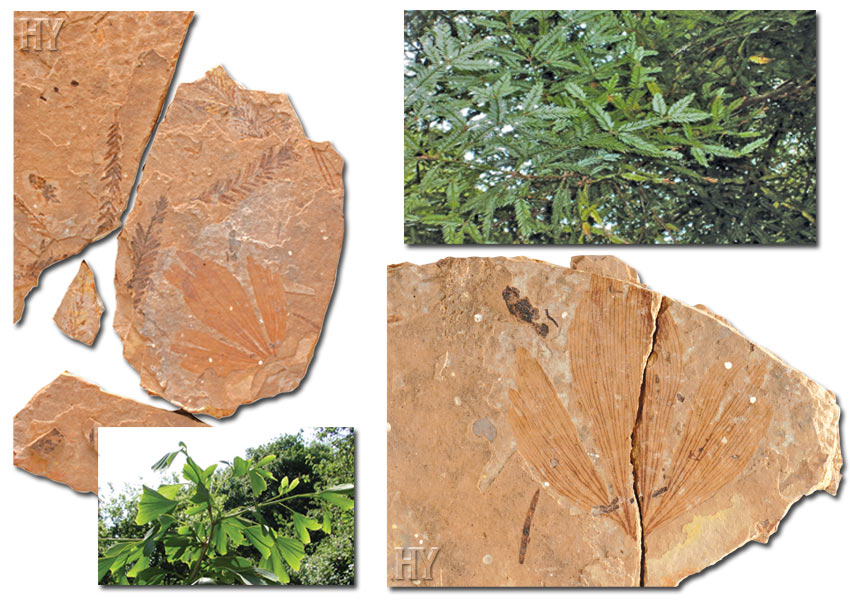 |
Ginkgo Leaf and Sequoia Stem Age: 54 to 37 million years old The ginkgo tree is a living fossil that belongs to its own class of Ginkgophyta. The oldest known examples date back 270 million years. The fossil ginkgo leaf shown here is between 54 and 37 million years old. These trees have been the same for hundreds of millions of years—a challenge to the theory of evolution. |
 |
Ginkgo Leaf Age: 54 to 37 million years old Fossil discoveries clearly disprove the claims regarding the evolution of plant species. One of these discoveries is of a 54- to 37-million-year-old fossil ginkgo leaf. Ginkgo trees that grew tens of millions of years ago are identical to those growing today. |
 |
Elm Leaf Age: 50 million years old The elm trees that grow in temperate climates are generally found in North America, Europe and Asia. 50-million-year-old fossil elm tree leaves clearly refute the claims of the evolution of plants. |
 |
Ginkgo Biloba Leaf Age: 54 to 37 million years old There is no fossil that can validate the claims regarding the evolution of plants. To the contrary, hundreds of thousands of fossils disprove these claims. One of these, pictured here, is that of a 54- to 37- million-year-old fossil ginkgo leaf. The fact that ginkgos have not changed in millions of years shows that evolution is a great deception. |
 |
Alder Leaf Age: 54 to 37 million years old There is no difference between alder trees growing today and ones that grew between 54 and 37 million years ago. Alders that lived then had the same systems as trees have today. This is proof that evolution never happened on Earth. |
 |
Hornbeam and Elm Leaves Age: 54 to 37 million years old The fossil record shows that all plant species have survived from the beginning of their existence without the slightest change. If a living organism retains the same characteristics for millions of years, then obviously it did not evolve; but was created. One proof of this fact can be seen in the 54- to 37-million-year-old fossils of hornbeam and elm leaves pictured here. |
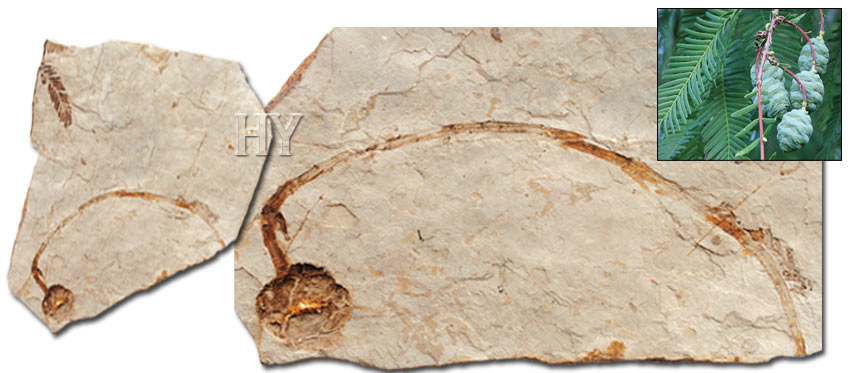 |
Dawn Redwood Frond and Cone Age: 52 to 43.6 million years old This 52- to 43.6-million-year-old redwood cone is proof that plants did not undergo a process of evolution. Redwoods that grew millions of years ago are the same as those growing today. This shows that living species did not evolve. |
 |
Lobster Age: 146 to 65 million years old Fossils that were gathered in the last 150 years proved that living species never changed or evolved from one another. This fact is underscored by this 146- to 65-million-year-old fossil of a lobster, no different from its counterparts alive today. |